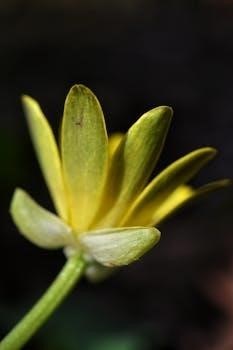Crepe myrtles are prized for their vibrant summer blooms, attractive bark, and colorful fall foliage. This guide provides essential information on how to successfully plant and establish these beautiful trees in your landscape, ensuring years of stunning beauty.
Crepe myrtles, scientifically known as Lagerstroemia, are deciduous trees or shrubs celebrated for their extended blooming season, which typically spans from summer into fall. Their showy flowers come in various colors, including pink, red, purple, and white, adding vibrant hues to any garden. Native to Asia and Australia, these trees have adapted well to warm climates around the world, becoming a popular choice for landscaping in regions with mild winters.

Beyond their captivating floral display, crepe myrtles offer year-round interest with their attractive exfoliating bark, which reveals a smooth, mottled trunk beneath. In autumn, the foliage transforms into brilliant shades of orange, red, and yellow, providing a final burst of color before the leaves drop. Crepe myrtles are relatively low-maintenance, drought-tolerant once established, and deer-resistant, making them an excellent option for gardeners seeking beauty and resilience.
These trees are versatile in their use, suitable as specimen plantings, street trees, or even in large containers. With proper selection and care, crepe myrtles can thrive in various garden settings, bringing beauty and enjoyment for many years. Understanding their basic needs and characteristics is the first step to successfully incorporating them into your landscape.
Choosing the Right Crepe Myrtle Variety
Selecting the appropriate crepe myrtle variety is crucial for ensuring its long-term success in your landscape. These trees come in various sizes, from dwarf cultivars suitable for containers to larger varieties that can reach heights of 20 feet or more. Consider the available space in your garden and the desired aesthetic when making your selection.
Different varieties also exhibit varying flower colors, bark textures, and fall foliage hues. Research the specific characteristics of each cultivar to find one that complements your existing landscape design. Factors such as bloom color, mature size, and growth habit should all be taken into account. Some popular varieties include ‘Natchez’ with its white flowers and exfoliating bark, ‘Tonto’ with its dark pink blooms, and ‘Muskogee’ known for its lavender blossoms and impressive height.
Pay attention to the plant’s cold hardiness, especially if you live in an area with harsh winters. Some varieties are more tolerant of cold temperatures than others. Consulting with a local nursery or arborist can provide valuable insights into which crepe myrtle varieties thrive best in your specific climate and soil conditions. Choosing the right variety will minimize pruning needs and ensure a healthy, beautiful tree for years to come.
Optimal Planting Time
The timing of planting significantly impacts the success of your crepe myrtle. The ideal window for planting crepe myrtles is typically late fall to early spring. During this period, the plant is dormant, minimizing stress and allowing it to establish roots before the onset of warmer weather and active growth.
Planting in the fall allows the tree to develop a strong root system over the winter months, giving it a head start when spring arrives. Spring planting is also suitable, provided it’s done before the heat of summer sets in. Avoid planting during the hot summer months, as the stress of transplanting can be detrimental to the tree’s survival.
In regions with mild winters, fall planting is often preferred, as it provides the longest period for root establishment before the next growing season. If you live in an area with harsh winters, spring planting may be a better option to avoid potential cold damage to newly planted trees. Regardless of the season, ensure the ground is not frozen or waterlogged before planting. Proper timing will give your crepe myrtle the best possible start and contribute to its long-term health and vigor.
Selecting a Planting Location
Choosing the right location is crucial for the health and vigor of your crepe myrtle. These trees thrive in full sun, requiring at least six hours of direct sunlight per day. A sunny location promotes abundant flowering and vibrant foliage. Insufficient sunlight can lead to weak growth and reduced bloom production.
Consider the mature size of the crepe myrtle variety you’ve chosen when selecting a planting site. Ensure there is ample space for the tree to grow without overcrowding other plants or structures. Common crepe myrtles can reach heights of 15-25 feet with a spread of 6-15 feet at maturity.
Avoid planting near walkways or solid surfaces, as crepe myrtles can drop dry pods and attract birds, potentially leading to bird droppings. Also, it’s important to ensure the location has well-draining soil to prevent root rot. If the soil tends to retain water, consider amending it with organic matter or selecting a different location. A spot with good airflow is also beneficial, promoting healthy foliage and reducing the risk of fungal diseases. Selecting the right location sets the foundation for a thriving crepe myrtle.
Soil Preparation and Drainage

Proper soil preparation is essential for establishing a healthy crepe myrtle. While crepe myrtles tolerate a wide range of soil types, including clay, they thrive in well-drained soil that is also moist. Good drainage prevents root rot and ensures the roots receive adequate oxygen.
Before planting, test the soil drainage in the selected location. Dig a hole approximately 12 inches deep and fill it with water. Observe how quickly the water drains. If the water remains in the hole for more than a few hours, the soil has poor drainage.
To improve soil drainage, amend the soil with organic matter such as compost, peat moss, or well-rotted manure. Incorporate the organic matter thoroughly into the soil to a depth of at least 12 inches. This will help to loosen the soil, improve drainage, and provide essential nutrients for the crepe myrtle. In areas with heavy clay soil, consider creating a raised planting bed to further improve drainage. A well-prepared soil bed will help your crepe myrtle flourish and exhibit its beautiful blooms and foliage. Remember, well-drained soil is the key to a healthy and vibrant crepe myrtle.
Digging the Planting Hole
The size of the planting hole is crucial for the successful establishment of your crepe myrtle. Dig a hole that is at least two to three times wider than the root ball of the tree. This allows the roots to easily spread out and establish themselves in the surrounding soil.

The depth of the hole is equally important. The top of the root ball should be level with the existing soil surface or slightly higher. Planting too deep can suffocate the roots and lead to root rot.
Before placing the crepe myrtle in the hole, loosen the soil on the sides of the hole with a shovel or garden fork. This will encourage the roots to grow outward into the surrounding soil.
Carefully remove the crepe myrtle from its container, being gentle not to damage the root ball. If the roots are circling the pot, gently loosen them with your fingers or a sharp knife. This will prevent the roots from becoming pot-bound and encourage them to grow outward. With the right size and preparation, the planting hole sets the stage for your crepe myrtle’s healthy growth.
Planting Procedure
Carefully lower the crepe myrtle into the prepared planting hole, ensuring that the top of the root ball is level with the surrounding soil. Adjust as needed. Begin backfilling the hole with the soil you removed, gently tamping it down around the root ball to eliminate air pockets.
As you backfill, water the soil to help it settle and further eliminate air pockets. Continue adding soil and watering until the hole is completely filled. Create a shallow basin around the base of the tree to help retain water.
After planting, apply a layer of mulch around the base of the crepe myrtle, keeping it a few inches away from the trunk. Mulch helps to retain moisture, suppress weeds, and regulate soil temperature.
Consider staking the tree for the first year to provide support while the roots establish. Use soft ties to avoid damaging the bark. Regularly check the ties to ensure they are not too tight. With proper planting, your crepe myrtle is set to flourish.
Watering Requirements
Newly planted crepe myrtles require consistent watering to establish a strong root system. Water deeply and regularly, especially during the first few months after planting. Aim to keep the soil consistently moist, but not waterlogged. Check the soil moisture regularly by sticking your finger a few inches into the ground.
During the first growing season, water deeply once or twice a week, depending on weather conditions. In hot, dry weather, more frequent watering may be necessary. As the crepe myrtle matures, its watering needs will decrease.
Established crepe myrtles are relatively drought-tolerant, but they still benefit from occasional watering during prolonged dry spells. Water deeply when the top few inches of soil feel dry to the touch. Avoid overwatering, as this can lead to root rot and other problems.
Consider using a soaker hose or drip irrigation to deliver water directly to the roots, minimizing water loss through evaporation. Mulching around the base of the tree will also help retain soil moisture and reduce the need for frequent watering.
Sunlight Needs
Crepe myrtles are sun-loving trees that require ample sunlight to thrive and produce abundant blooms. To ensure healthy growth and vibrant flowering, it’s essential to plant your crepe myrtle in a location that receives at least six hours of direct sunlight each day.
When selecting a planting site, observe the amount of sunlight the area receives throughout the day. Avoid planting crepe myrtles in areas that are shaded by buildings, trees, or other structures, as insufficient sunlight can lead to leggy growth, reduced flowering, and increased susceptibility to pests and diseases.
If your crepe myrtle is planted in a partially shaded area, consider pruning nearby trees or shrubs to increase sunlight exposure. Additionally, ensure that the surrounding area is free from obstructions that may block sunlight.
Crepe myrtles that receive adequate sunlight will exhibit strong, healthy growth, abundant blooms, and vibrant fall foliage. By providing your crepe myrtle with the sunlight it needs, you can enjoy its beauty and charm for years to come. Remember, full sun equals full bloom!
Fertilizing Crepe Myrtles
While crepe myrtles are relatively low-maintenance trees, proper fertilization can promote healthy growth and abundant blooms. However, it’s essential to avoid over-fertilizing, as this can lead to excessive foliage growth at the expense of flowering.
The best time to fertilize crepe myrtles is in early spring, just before new growth begins. Use a balanced, slow-release fertilizer specifically formulated for flowering trees and shrubs. Follow the package instructions carefully to determine the appropriate amount of fertilizer to apply based on the size and age of your tree.
Spread the fertilizer evenly around the base of the tree, extending out to the drip line (the outer edge of the tree’s canopy). Water the area thoroughly after applying the fertilizer to help it soak into the soil.
Avoid fertilizing crepe myrtles in late summer or fall, as this can stimulate new growth that may be damaged by frost. Additionally, if your soil is already rich in nutrients, you may not need to fertilize your crepe myrtle at all. A soil test can help you determine the nutrient levels in your soil and whether fertilization is necessary.
Pruning Techniques
Pruning crepe myrtles is a topic of much debate, and improper pruning can lead to unsightly and unhealthy trees. The key is to prune judiciously and with a clear purpose in mind. The best time to prune crepe myrtles is in late winter or early spring, before new growth begins.
Start by removing any dead, damaged, or diseased branches. Also, remove any crossing or rubbing branches to improve air circulation and prevent potential problems. Suckers, which are shoots that grow from the base of the tree, should also be removed.
If you want to reduce the height of your crepe myrtle, prune back the tallest branches to a lateral branch that is at least one-third the diameter of the branch being removed. Avoid topping the tree, which is the practice of cutting off the main trunks at a uniform height. This results in a dense cluster of weak, unattractive growth.
The goal of pruning should be to maintain the natural shape of the tree and encourage healthy growth and abundant flowering. With proper pruning, you can enjoy a beautiful and thriving crepe myrtle for many years to come.
Pest and Disease Management
Crepe myrtles are generally resilient trees, but they can be susceptible to certain pests and diseases. Being proactive and implementing preventive measures is crucial for maintaining their health and vigor. One of the most common issues is powdery mildew, a fungal disease that appears as a white or gray powdery coating on the leaves and stems, favored by humid conditions.

To prevent powdery mildew, ensure good air circulation around the tree by pruning properly and avoiding overcrowding. Additionally, consider planting crepe myrtle varieties that are resistant to powdery mildew. Another potential problem is aphids, small sap-sucking insects that can cause distorted growth and attract sooty mold.
Regularly inspect your crepe myrtles for signs of pests or diseases. If you detect any problems, take action promptly. Insecticidal soap or horticultural oil can be effective against aphids. For more serious infestations or diseases, consult with a local arborist or plant expert for recommendations on appropriate treatments.
Maintaining healthy growing conditions, including proper watering and fertilization, can also help to prevent pest and disease problems. A healthy crepe myrtle is better equipped to withstand these challenges.